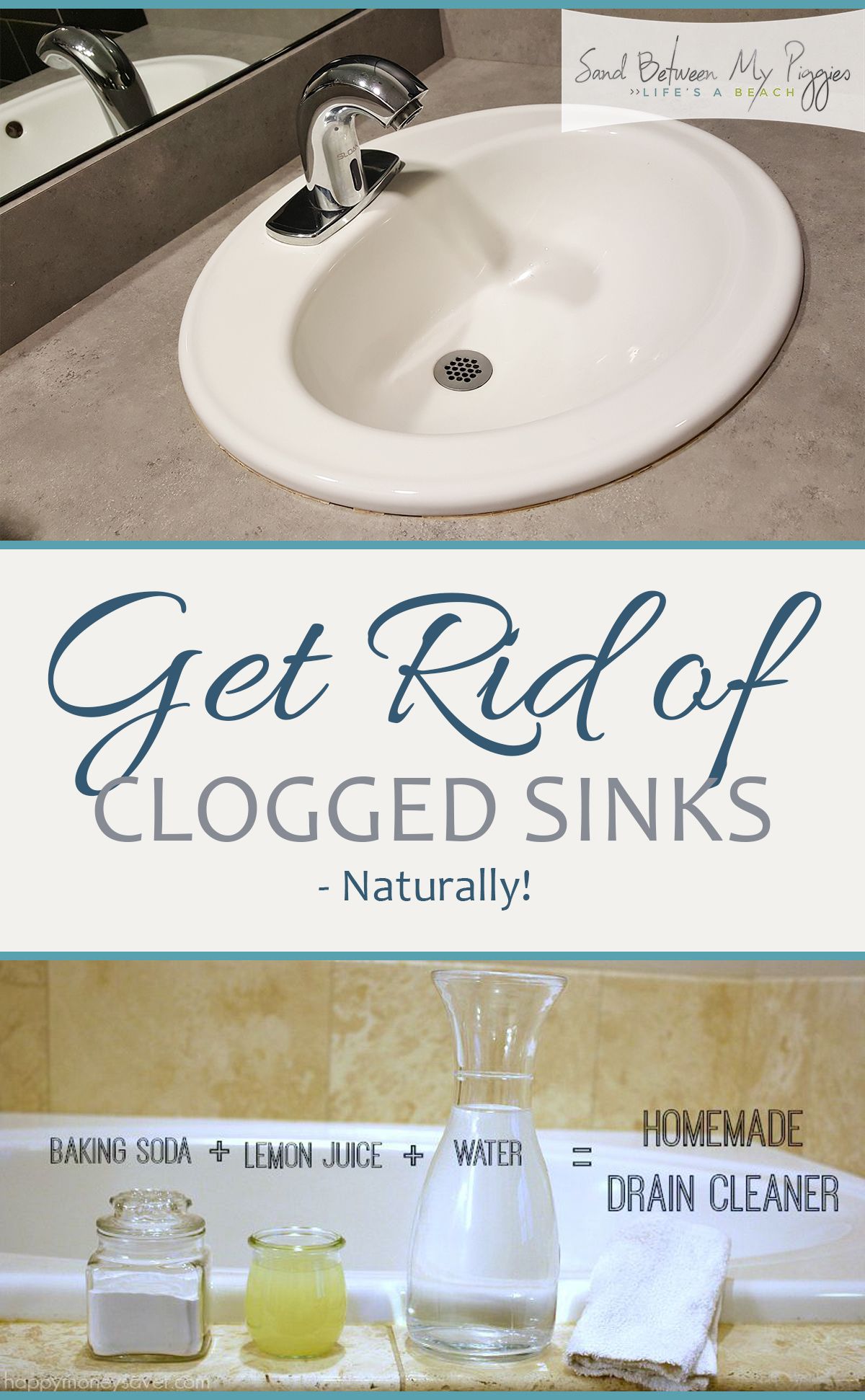Unclogging a Bathroom Sink Drain
Dealing with a clogged bathroom sink can be a huge inconvenience. Not only does it render the sink unusable, but it can also cause foul odors and potential water damage. But fear not, unclogging a bathroom sink drain is a relatively easy task that can be done with a few household items and tools. Here are 10 steps to help you get your bathroom sink back to working order.
How to Fix a Clogged Bathroom Sink
Before you start trying to unclog your bathroom sink, it's important to understand the cause of the clog. Hair, soap scum, and toothpaste residue are the most common culprits of a clogged bathroom sink drain. Once you know the cause, you can choose the appropriate method for clearing the clog.
DIY Solutions for a Clogged Bathroom Sink
For minor clogs, you can try some DIY solutions using items you probably already have at home. One method is to pour boiling water down the drain. This can help dissolve any soap scum and loosen up the clog. Another option is to use a mixture of baking soda and vinegar. Pour ½ cup of baking soda down the drain, followed by 1 cup of vinegar. Let it sit for 15 minutes before flushing it with hot water.
Common Causes of a Clogged Bathroom Sink
As mentioned before, hair, soap scum, and toothpaste residue are the main culprits of a clogged bathroom sink drain. But sometimes, the clog can be caused by larger objects such as jewelry or small toys that accidentally fell into the drain. It's important to be mindful of what you're putting down the sink to prevent a clog from happening in the first place.
Tips for Preventing a Clogged Bathroom Sink
To avoid dealing with a clogged bathroom sink in the future, there are a few preventative measures you can take. First, use a drain cover to catch any hair or small objects that may fall into the drain. Second, regularly clean the drain cover and remove any buildup. Third, avoid pouring grease or oil down the drain as it can solidify and cause a clog.
Using a Plunger to Clear a Clogged Bathroom Sink
If the DIY solutions don't work, it's time to bring out the trusty plunger. Fill the sink with enough water to cover the drain and start plunging. The suction created by the plunger can help dislodge the clog. Make sure to cover the overflow hole with a wet cloth to create a seal.
Chemical Drain Cleaners for a Clogged Bathroom Sink
Another option is to use chemical drain cleaners to clear the clog. These cleaners contain strong chemicals that can dissolve the clog, but they can also be harmful to your pipes and the environment. It's important to read the instructions carefully and use protective gear when handling these cleaners.
Professional Plumbing Services for a Clogged Bathroom Sink
If all else fails, it's best to call a professional plumber to clear the clog. They have the necessary tools and expertise to tackle even the toughest clogs. They can also inspect your pipes for any potential issues and offer advice on how to prevent future clogs.
Tools for Clearing a Clogged Bathroom Sink
If you want to take matters into your own hands, there are a few tools you can use to clear a clogged bathroom sink. A drain snake or auger is a long, flexible tool that can reach deep into the drain to break up and remove the clog. Another option is a drain brush, which is designed to scrape away gunk and buildup from the sides of the drain.
How to Maintain a Clear Bathroom Sink Drain
After successfully unclogging your bathroom sink, it's important to maintain a clean and clear drain. Regularly pour hot water down the drain to keep it free of buildup. You can also use a mixture of baking soda and vinegar once a month as a preventative measure. And remember to be mindful of what you put down the drain to avoid future clogs.
Troubleshooting a Clogged Bathroom Sink Pipe

Understanding the Problem
 A clogged bathroom sink pipe is a common household issue that can cause frustration and inconvenience. It occurs when debris, such as hair, soap scum, and toothpaste, accumulates and blocks the pipe, preventing water from draining properly. This can lead to standing water in the sink, unpleasant odors, and potential water damage if left untreated.
A clogged bathroom sink pipe is a common household issue that can cause frustration and inconvenience. It occurs when debris, such as hair, soap scum, and toothpaste, accumulates and blocks the pipe, preventing water from draining properly. This can lead to standing water in the sink, unpleasant odors, and potential water damage if left untreated.
Identifying the Cause
 There are several reasons why a bathroom sink pipe may become clogged. One of the main causes is improper use of the sink, such as pouring grease or food scraps down the drain. Another common cause is inadequate cleaning or maintenance, which allows debris to build up over time. Additionally, old or faulty pipes may also contribute to clogs.
There are several reasons why a bathroom sink pipe may become clogged. One of the main causes is improper use of the sink, such as pouring grease or food scraps down the drain. Another common cause is inadequate cleaning or maintenance, which allows debris to build up over time. Additionally, old or faulty pipes may also contribute to clogs.
DIY Solutions
 If you're dealing with a clogged bathroom sink pipe, there are a few steps you can take to try and resolve the issue yourself before calling a plumber. One option is to use a plunger to try and dislodge the blockage. You can also try using a mixture of baking soda and vinegar, followed by hot water, to break down and flush out the debris.
If you're dealing with a clogged bathroom sink pipe, there are a few steps you can take to try and resolve the issue yourself before calling a plumber. One option is to use a plunger to try and dislodge the blockage. You can also try using a mixture of baking soda and vinegar, followed by hot water, to break down and flush out the debris.
When to Call a Professional
 If your attempts at unclogging the bathroom sink pipe are unsuccessful, it may be time to call in a professional plumber. They have the expertise and tools to effectively clear the blockage and ensure that your pipes are in good working condition. It's also important to seek professional help if the clog is recurring, as this may indicate a deeper underlying issue.
If your attempts at unclogging the bathroom sink pipe are unsuccessful, it may be time to call in a professional plumber. They have the expertise and tools to effectively clear the blockage and ensure that your pipes are in good working condition. It's also important to seek professional help if the clog is recurring, as this may indicate a deeper underlying issue.
Preventing Future Clogs
 To avoid dealing with a clogged bathroom sink pipe in the future, there are some preventative measures you can take. These include regularly cleaning and maintaining your sink and pipes, avoiding putting anything other than water and soap down the drain, and using a drain cover to catch any debris. It's also a good idea to have your pipes inspected and cleaned by a professional on a regular basis.
To avoid dealing with a clogged bathroom sink pipe in the future, there are some preventative measures you can take. These include regularly cleaning and maintaining your sink and pipes, avoiding putting anything other than water and soap down the drain, and using a drain cover to catch any debris. It's also a good idea to have your pipes inspected and cleaned by a professional on a regular basis.
In Summary
 A clogged bathroom sink pipe can be a nuisance, but with the right knowledge and tools, you can easily troubleshoot and resolve the issue. By understanding the causes, attempting DIY solutions, and knowing when to call a professional, you can keep your bathroom sink functioning properly and prevent future clogs. Remember to stay proactive in maintaining your pipes to avoid any potential plumbing disasters.
A clogged bathroom sink pipe can be a nuisance, but with the right knowledge and tools, you can easily troubleshoot and resolve the issue. By understanding the causes, attempting DIY solutions, and knowing when to call a professional, you can keep your bathroom sink functioning properly and prevent future clogs. Remember to stay proactive in maintaining your pipes to avoid any potential plumbing disasters.






















































:max_bytes(150000):strip_icc()/freshen-and-unclog-drain-with-baking-soda-1900466-22-bbf940b70afa4d5abef0c54da23b1d3f.jpg)






































:max_bytes(150000):strip_icc()/bathroom-sink-drain-installation-2718843-02-61e5ecbee1e949be8d8f45ac4f5a6797.jpg)







